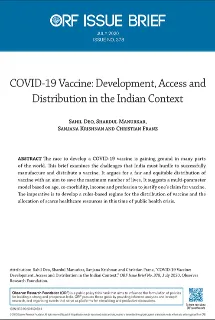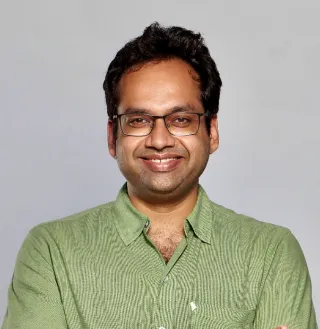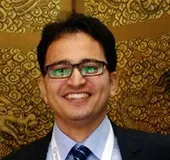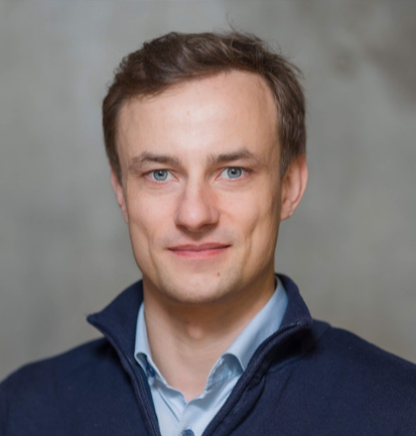INTRODUCTION
More than three months since India announced its first lockdown, the country has not seen a decline in its COVID-19 cases. To be sure, the various phases of the lockdown, along with the dissemination of guidelines on social distancing, better hygiene, and use of masks, have reaped positive results. However, the country continues to record some 20,000 new cases every day,[1] and policymakers are hard-pressed to make decisions on the appropriate containment strategies. Meanwhile, the global race to develop a vaccine or find a therapeutic cure is ongoing, with governments, non-profit organisations, universities, and pharmaceutical companies collaborating in numerous efforts.
At the time of writing this brief, there were more than 140 vaccines[2] under development, and research is underway for over 400 therapeutic drugs.[3]Scientists are exploring novel approaches for the development of a vaccine, such as using the RNA of the virus. Developing a vaccine, and promoting universal access to it, appears to be the biggest hope at this point. Researchers are suggesting an optimistic window of 12 to 18 months from the declaration of a pandemic in March, for the development and approval of a COVID-19 vaccine.[4]
In this context, policymakers in India must consider two key questions: how may India get access to a COVID-19 vaccine? And if it does, how will it ensure fair and equitable distribution among its large and diverse population? While the two questions can be asked separately, the manner in which the first is addressed will have a bearing on the second. This brief recommends that a rational and objective strategy be put in place in the coming months to ensure an effective timeframe for availability, and to address critical challenges around logistics and distribution that could arise once India has access to the vaccine.
This brief explores the twin questions of access, and fair and equitable distribution. It will first study the vaccine development process and inspect its linkages with access strategies and the rise of so-called “vaccine nationalism.”[a] It will then contextualise India’s situation within the global landscape of vaccine development, and critique the current strategy towards gaining access to a successful vaccine candidate. The brief then discusses the issues related to production and procurement, and offers recommendations for ensuring fair and equitable distribution.
ACCESS
1. Vaccine development
The process of developing safe and effective vaccines involves a number of phases, from the laboratory to the clinic. The first step of pre-clinical testing involves scientists administering the vaccine to animals such as mice or monkeys, and observing if it produces an immune response. There are currently more than 125 vaccines undergoing pre-clinical testing for COVID-19. The vaccine will then enter three phases of clinical trials.[5]
In the first phase, the vaccine undergoes safety trials, with scientists administering the vaccine to a small number of people. This tests safety and dosage, and confirms whether indeed the vaccine stimulates the human body’s immune system. Currently, there are 10 vaccines that are in this phase of testing for COVID-19.[6] In the second phase of clinical trials, scientists conduct expanded trials by giving the vaccine to hundreds of people divided into groups such as children and the elderly, to understand if the vaccine acts differently for different groups. These trials further test the safety of the vaccine. There are eight vaccines in this phase of testing for COVID-19, at the time of writing this brief.[7] In the third phase of clinical trials, scientists evaluate for efficacy by giving the vaccine to people numbering in the thousands and observing how many of them become infected, compared with others who receive a placebo. There are only two vaccines so far in this phase of testing for COVID-19.[8]
Finally, regulators in each country would be reviewing the trial results and making a decision on whether or not to approve the particular vaccine for their populations. Following the approval, large-scale production and distribution becomes possible.
2. Access strategies and “vaccine nationalism”
It is difficult to determine which of the candidates for vaccine development will succeed. Therefore, manufacturers, multilateral organisations, and governments adopt various strategies to ensure access to the vaccine, or vaccines, that finally get approval by a national regulator and the World Health Organization (WHO). Manufacturers may invest in developing their own vaccine, or sign a licensing agreement with developers of one or more vaccine candidates that are under trial, or decide to do both. Multilateral agencies such as WHO can put in place collaborative frameworks wherein a variety of actors pool resources to develop and make available a safe and effective vaccine.
Governments may try to ensure priority access to its citizens by signing pre-purchase agreements with manufacturers or, in case of manufacturers resident in their territory, ban exports of the vaccine. Alternatively, they may participate in and contribute to the collaborative effort being driven by a multilateral organisation and then gain access to a vaccine if the process eventually proves successful.
The one strategy for access that will be most detrimental to global public health is that where governments take up unilaterally with specific manufacturers through pre-purchase agreements. In the recent past, certain governments were able to secure such deals during the early stages of the 2009 H1N1 flu pandemic.[b] At that time, some of the world’s wealthiest countries entered into pre-purchase agreements with several pharmaceutical companies working on H1N1 vaccines. For instance, as WHO notified the global community that at most, two billion doses could be produced globally for the flu pandemic, the United States (US) ensured exclusive access to 600,000 of these doses through pre-purchase agreements.[9] The UK, Canada, Sweden, Switzerland, Denmark and Austria were also among those countries that had negotiated, and obtained, the right to buy doses of the vaccine.[10] Indeed, it was only when the worst of the flu pandemic had passed and demand for the vaccines dropped that a group of nine countries pledged to donate vaccine doses to developing countries.[11]
To be sure, ‘vaccine nationalism’ is not only detrimental for global public health but also for the global economy. If countries with large numbers of cases lag behind in their access to vaccines, the threat of transmission remains strong. This, in turn, will continue to disrupt global supply chains and therefore make economic recovery even more difficult.[12]
Recent developments in the current context of COVID-19 are pointing towards a repeat of the mistakes made by governments during the H1N1 flu pandemic.[13]Further, given the emerging trend of “hyper-nationalism”[c] in domestic politics in many parts of the world—and the concomitant disenchantment with global governance frameworks—it seems likely that the mistakes of the past will only be repeated with even more enthusiasm. In such scenario, WHO and the World Trade Organization (WTO) must step in to prevent cartelisation or profiteering. WTO member countries can invoke the ‘security exception’ clause contained in Article 73 (b) of the Agreement on Trade-related Intellectual Property Rights (TRIPS Agreement), to take “actions which it considers necessary for the protection of its essential security interests”[14] in the wake of the COVID-19 threat. Member countries can use this exception to procure medical products and devices or to use technologies to manufacture them as necessary. It is important for India to carefully consider the options before it and ensure that when a vaccine is developed and made available, its people do not get left behind.
3. India’s coordinates within the access map
India’s current access strategy relies heavily on the world’s largest vaccine producer in terms of volume, the Serum Institute of India (SII) based in Pune, in the state of Maharashtra. SII has been active on all three fronts of development, partnerships and ramping up production capabilities since the early days of the outbreak.
As a privately owned company, SII claims to be in a position to sideline some of its existing commercial projects to ensure that they can scale-up production quickly when the COVID-19 vaccine is found. The SII is in phase-3 testing of its recombinant BCG vaccine in Australia and Germany,[15] as well as various parts of India.[16]
SII has tied up with AstraZeneca, a British pharmaceutical company,[17] to secure a licence to mass-produce a vaccine being developed by the University of Oxford. The company has also tied up with US-based biotech firm Codagenix, which will develop a live-attenuated vaccine (a weakened virus that does not cause disease but triggers immune response) to fight COVID-19, for trial, manufacturing and distribution by SII. Lastly, SII has tied up with Austrian biotech company Themis Bioscience for another COVID-19 vaccine candidate that deploys measles virus as a vector to inject an antigen or protein of SARS-CoV-2. The company also sold its Czech Republic-based subsidiary Praha Vaccines in May 2020, for approximately US$ 167 million to Novavax, a US-based vaccine developer, which will produce a COVID-19 vaccine candidate in their site. In the past, Serum and Novavax have partnered for malaria vaccines; a news report says the partnership may be extended to a COVID-19 vaccine as well.[18]
Officials of SII have said that most of the vaccines that it will manufacture will go to people in India before allowing shipping overseas. Further, the company has said that it is working closely with the Union government, which will have an important role in determining which countries will have access to the vaccines. SII will invest approximately INR 6 billion on a manufacturing unit that will be dedicated to the production of COVID-19 vaccines and expects the government to share part of the costs.[19]
It is likely that India will be able to leverage its private sector towards vaccine manufacturing to gain access to a safe and effective vaccine when one is approved. On 24 April, WHO, European nations, the Bill and Melinda Gates Foundation, and the Wellcome Trust created a collaborative platform for the accelerated development, production and equitable global Access to COVID-19 Tools – or the ACT Accelerator.[20] On 4 May, the European Union (EU) hosted a pledging event, called the Coronavirus Global Response Initiative, where world leaders, celebrities and philanthropists pledged some 7.4 billion euros for research into COVID-19 vaccines, treatment and testing.[21] India did not participate in this initiative; neither did the US, nor Russia.[22] For India, this decision to not be part of the initiative may lead to a difficult situation in the event that the SII fails to develop a vaccine successfully and obtain regulatory approvals for it.
FAIR AND EQUITABLE DISTRIBUTION
1. Production and procurement
After successful development and approval, the next big challenge for India will be production, procurement and distribution. They key question is whether India has enough infrastructure for at least one billion vaccine doses. The country has never attempted to inoculate millions of people in one go. In 2011, under the national polio immunisation programme, 172 million children under the age of five were administered oral polio vaccine in a span of five days. As the nature of COVID-19 is different from that of polio, such an exercise cannot be replicated.
The case of COVID-19 brings up the contested issue of healthcare rationing. For ordinary goods and services, this question may be addressed by applying the general equilibrium theory: the most efficient way of allocating a scarce resource lies in using typical market instruments like price point discovery.[23]
However, it is not wise to treat the COVID-19 vaccine as merely any other economic good. It is a good that will see inelastic demand, and if demand surpasses supply and the price goes up, it will not curtail demand. Demand could keep rising with the number of active cases. The increase in price will also not be able to encourage new suppliers to enter the market, because one or two manufacturers will enjoy exclusive access to the intellectual property required to produce the vaccine. Therefore, this could be a classic case for government rationing of an economic good, where price caps (or price waivers, as proposed by SII[24]) will be imposed by the government to combat potential shortages.
Large-scale production will need extensive investment from the government and the private sector. As indicated by SII officials, the private sector expects the government to share the risk and funding associated with producing the COVID-19 vaccine. Different types of vaccines – mRNA,[d] inactivated viruses[e]—require entirely different manufacturing techniques, thus making it non-feasible to repurpose a single assembly line.
In terms of procurement, India’s National Vaccine Policy of 2011 constitutes the basic policy framework for rationing. At present, all vaccines required for the Universal Immunisation Program are purchased at the central level for distribution to the states. The procurement of vaccines by the central government is done under the overarching General Financing Rules (GFR). The vaccines are purchased using Annual Rate Contracts (as per GFR) against which Supply Orders are issued. Parallel contracts are awarded for most vaccines, because no single domestic manufacturer has enough available production capacity to cover the entire annual requirement.
The national vaccine policy notes that overdependence on a limited number of domestic manufacturers makes the government vulnerable to price increases. This will be a relevant point in the COVID-19 context as well. However, the government has been able to pool significant resources to combat the current pandemic. For example, INR 7800 cr (about US$1 billion) funding has been diverted from the Members of Parliament Local Area Development Scheme[25](MPLADs), and the Prime Minister’s Citizen Assistance and Relief in Emergency Situations (PMCARES) Fund has raised around US$1.2 billion.[26] Besides, the potential image issues associated with price gouging at this time will ensure the private sector does not present any challenges for the government while crafting partnerships for large-scale manufacturing and procurement.
2. Recommendations for fair and equitable distribution
Concerns around post-procurement distribution are not limited to creating manufacturing plants and the maintenance of a robust supply chain. It also involves questions of ethics and economics—how will the Union government decide which states, districts or individuals should get the vaccine? Should access be given on a first-come-first-served basis? What criteria can be deployed to assess the claim for vaccine? Should it be, first, the elderly who are more vulnerable with pre-existing diseases, or the children who may suffer potentially irreversible lung damage due to COVID-19?
There are other sets of people who have equal claim to priority access as well, such as frontline health workers and police forces. In a country like India where income distribution is highly skewed, it is also imperative to ask how the government can prioritise giving access to the poor populations, especially considering that rationing systems are prone to blackmarketing.
To answer these questions, it is important to first clarify the objectives of a rationing exercise. The existing literature[27],[28] on this subject delineates three broad objectives for healthcare rationing:
- Saving the most lives – This is a straightforward principle often adhered to by medical experts. The objective is to maximise the number of people that can be saved by using a drug or a vaccine.
- Saving most life years – Under this approach, medical resources are preferentially allocated to the younger population as they have more probability to survive and subsequently to contribute as productive members of society.
- Quality Adjusted Life Year (QALY)[f] – Rationing by QALYs involves selecting outcome measures that adjust life-years for quality, and then allocating so as to maximise QALYs. Use of QALYs allows comparisons regarding effectiveness across diseases and services that would otherwise be difficult to compare.
The option of ‘Saving the most lives’ invariably gives preferential access to elder people; the other two end up preferring the younger population. In routine times medical resources are apportioned on egalitarian principles, making them available on a first-come-first-served basis, and assuming that everybody’s life is equal. In the case of disasters, or a pandemic when the healthcare system is overwhelmed, this becomes difficult. During the outbreak of avian influenza (H5N1) some clinicians argued denying critical care to anyone over the age of 85 years.[29] With limited resources at their disposal, medical experts tend to prefer the most pressing criterion – chances of survival.[30] More clinical guidance is needed to determine this multifaceted question.
In this context, one may look at developing mathematical models or multi-value ethical frameworks to find solutions. Both methods allow policymakers to take an approach that will be driven not only by data but ethics as well.
This brief proposes one such model. It takes into consideration emerging correlation between age, existing co-morbidities, and reported deaths, and is aimed at saving the most number of lives. According to a press release by the Ministry of Health and Family Welfare on deaths due to COVID-19, “It is seen that only 10% of India’s population (people above 60 years age) is contributing to 50% of India’s COVID-19 deaths. 73% of COVID-19 deaths in India are people with co-morbidities (including diabetes, hypertension, cardiovascular and respiratory diseases). Hence, these high risk groups need to be effectively protected.”[31] On 2 June 2020, the nodal ministry outlined the composition of high-risk groups who need protection. Thus this brief takes age and co-morbidities as basic parameters to develop a composite matrix for prioritising people for inoculation.
According to the 2019 IDF Diabetes Atlas,[32] India is home to the world’s second largest number of adults with diabetes. Of the total adult population (859 million) in India, 77 million (8.9 percent) people have diabetes in India.[33] Of the total diabetic population, 12.1 million people are older than 65 years.[34]
The Global Burden of Disease (GBD) report published in 2017 estimated that 61.8 percent of the deaths in 2016 were because of Non-Communicable diseases (NCDs).[35] Three-fourths (73.2 percent) of deaths in the age group of 40-69, and 71.6 percent of deaths in the age group of 70 and above in 2016 were attributed to NCDs.[36] The total number of adult deaths in 2016 attributed to NCDs is close to 56.9 million.[37]
Both the IDF Diabetes Atlas and The India State-Level Disease Burden Initiative[38] provide a snapshot of adult population at risk due to COVID-19. The estimates for population at risk ranges between 56.9 million to 77 million. Adult population with co-morbidities forms a baseline for vaccine distribution. However, assuming the skewed demand-supply ratio, this brief proposes two more variables.
- Profession: A heavier weightage can be assigned to certain professionals such as frontline health workers, and law enforcement agencies including police and army personnel.
- Income: Individual or household economic status should be considered as a criterion for rationing of the vaccine. This will ensure minimising inequalities in the distribution of healthcare resources.
Table 1. Multi-parameter framework for Vaccine Distribution
| Parameter |
Reasoning |
1 |
2 |
3 |
| Age |
People above 60 years contributing 50% of India’s COVID deaths |
0-14 Years |
15-39 Years |
40-59 Years |
60 Plus Years |
| Co-morbidities |
73% of COVID-19 deaths in India are associated with co-morbidities |
No co-morbidities |
Mild or early stage co-morbidities |
Moderate or severe co-morbidities (3) |
| Profession |
Prioritizing people working on frontline and who are involved in essential services |
Not working |
Working in non-essential sectors |
Frontline healthcare and other essential workers (3) |
| Income |
Equitable distribution of healthcare services |
High Income |
Middle Income |
Low Income |
Adapted and Modified from multivariate ethical framework[39]
- Actionable next steps
- Establish a task force to determine accessibility, production and distribution of COVID-19 vaccine.
- Develop and distribute a nationwide plan for vaccine distribution that balances effectiveness, efficiency and equity.
- Develop and distribute a vaccine rationing “decision tree” for clinicians.
- Develop and distribute protocols for reallocation if required to meet unexpected surge in demand.
- Establish and maintain district-, state- and nationwide systematic databases of inoculation.
During the H1N1 crisis of 2009, an interesting mathematical model was developed in the US by a team led by a scholar from the Yale University School of Medicine.[40] The model utilised survey-based data and mortality data from historical influenza pandemics, and considered factors such as death, infection, total years of life lost, and economic costs to calculate the most effective vaccine distribution strategies. The crux of the model was the data on “infectious contact”, which was defined as “contact that can transmit flu”.
The model gave noteworthy results, such as recommending that the vaccines be first given to school children and their parents, as opposed to younger children or old people. At that time, the authors of the Yale model[41] questioned the effectiveness of the model in places where data availability was an issue.[42]However, India has made rapid strides in that domain since the H1N1 pandemic, and such mathematical modelling can be done using health data collected by the Aarogya Setu[g] app and other government facilities.
Overall, the objective of rationing COVID-19 vaccines must be to save the maximum number of lives. The issues outlined in this brief should begin a conversation on how to ensure fair and equitable distribution of vaccines in India. As the COVID-19 situation is still evolving and so is the vaccine development, these considerations could change in the wake of more information and data.
CONCLUSION
Vaccine development and approval will not put an end to the current pandemic. The imperative will be robust production and distribution policies and protocols to ensure that the vaccine can be administered universally. India lacks effective policies for healthcare rationing in practice as well as required discussions in academia. This pandemic can be used to create greater awareness about the rationing of healthcare resources in a time of crisis.
As early as 2011, the National Vaccine Policy had mentioned that “the growing need is being felt to stockpile vaccines against certain diseases with potential to cause outbreaks…”[43] It is time to draw the attention of policymakers to the recommendations offered in that document to ensure access in the best possible manner. The policy has recommended that the quantity needed for a stockpile should be assessed together with the National Disaster Management Agency (NDMA), the manufacturers of these vaccines be communicated the decision ahead of time for planning production, and adequate cold chain equipment earmarked for storage. Further, the NDMA also needs to be informed about the locations of these stockpiles so that the agency can ensure delivery of these vaccines at the right place at the right time.
While policymakers and frontline workers combat the pandemic on a day-to-day basis, it is important to assess the situation over a longer horizon of 12 to 18 months and start taking steps accordingly. India’s road to recovery from this pandemic could be less fraught if the country can shift focus towards developing strategies for gaining access, quickly producing, and effectively delivering vaccines as soon as one is developed and approved.
About the Author
Sahil Deo and Christian Franz are co-founders of CPC Analytics, a data-driven policy consulting firm with offices in Pune and Berlin.
Sanjana Krishnan is Partner at CPC Analytics.
Shardul Manurkar is Lead (Legislative Research) at CPC Analytics.
Endnotes
[a] Vaccine nationalism occurs when a country manages to secure doses of vaccine for its own citizens or residents before they are made available to other countries. Countries are contemplating export bans and entering into pre-purchase agreements to prioritise locals first.
[b] [b] On 11 June 2009, WHO increased threat level of outbreak of H1N1 novel influenza commonly known as swine flu to pandemic level. This new strain of H1N1 resulted from previous triple reassortment of bird, swine and human flu viruses further combined with a Eurasian pig flu virus.
[c] The promotion of extreme nationalism. It often aims to preserve national culture or identity by seeking absolute obedience from citizens.
[d] mRNA – messenger RNA vaccine is a novel type of vaccine for providing acquired immunity through an RNA containing vector.
[e] Inactivated vaccines – are made using wild viruses or bacteria that have been grown in a culture medium and inactivated before being induced in a vaccine.
[f] One quality adjusted life year means living a year longer at full health.
[g] Aarogya Setu is a COVID-19 tracking mobile application launched by the Government of India.
[1] India records over 20,000 new COVID cases for third consecutive day; Many states report highest single-day spike. (n.d.). Business Insider. Retrieved July 7, 2020.
[2] Corum, Jonathan, and Carl Zimmer. n.d. “Coronavirus Vaccine Tracker”. The New York Times, sec. Science.
[3] “Biopharma Products in Development for COVID-19”, n.d. www.Bioworld.Com. Accessed July 7, 2020.
[4] “Treatments and a Vaccine for COVID-19: The Need for Coordinating Policies on R&D, Manufacturing and Access”, n.d. OECD. Accessed July 7, 2020.
[5] “Draft Landscape of COVID-19 Candidate Vaccines”, n.d. www.who.int.
[6] Corum, Jonathan, and Carl Zimmer. n.d. “Coronavirus Vaccine Tracker”. The New York Times, sec. Science.
[7] Ibid.
[8] Ibid.
[9] Brown, David. 2009. “Most of Any Vaccine for New Flu Strain Could Be Claimed by Rich Nations’ Preexisting Contracts”, www.washingtonpost.com, May 7, 2009.
[10] Whalen, Jeanne. 2009. “Rich Nations Lock in Flu Vaccine as Poor Ones Fret”, Wall Street Journal, May 17, 2009, sec. Business.
[11] Ibid.
[12] Weintraub, Rebecca, Asaf Bitton, and Mark L. Rosenberg. 2020. “The Danger of Vaccine Nationalism”. Harvard Business Review. May 22, 2020.
[13] Ibid.
[14] “WTO | Intellectual Property (TRIPS) – Agreement Text – Institutional Arrangements Etc”, n.d. www.wto.org.
[15] Pilla, Vishwanath “How Serum Institute Became the Jio of Coronavirus Vaccine Deals”, Moneycontrol. Accessed June 20, 2020.
[16] “India’s Serum Institute to Play Pivotal Role in COVID-19 Vaccines”, n.d. www.biospectrumasia.com. Accessed July 7, 2020.
[17] “Coronavirus (Covid-19) Vaccine Latest Update: Oxford-AstraZeneca Corona Vaccine Production Starts; US Says 2 Billion Doses ‘Ready to Go’” 2020. The Indian Express. June 10, 2020.
[18] “DBT-BIRAC Call on COVID-19 Research Consortium”, n.d. Pib.Gov.In. Accessed July 7, 2020.
[19] Reuters. 2020. “India’s Serum Institute to Make Millions of Potential Coronavirus Vaccine Doses”, April 29, 2020.
[20] “Press Corner”, n.d. European Commission – European Commission.
[21] Ibid.
[22]Weintraub, Rebecca, Asaf Bitton, and Mark L. Rosenberg. 2020. “The Danger of Vaccine Nationalism”. Harvard Business Review. May 22, 2020.
[23] Huang, Fangliang, and Yong Han. 2008. Review of Price Discovery, Competition And Market Mechanism Design. Asian Social Science 4 (6).
[24] Reuters. 2020. “India’s Serum Institute to Make Millions of Potential Coronavirus Vaccine Doses”, April 29, 2020.
[25] Roy, Chakshu “Explained: How MPLAD Scheme Works, and How Far Its Suspension Will Help Covid-19 Fight.” 2020. The Indian Express. April 29, 2020.
[26] Salve, A. B., Prachi. (2020, May 20). PM CARES Received At Least $1.27 Bn In Donations–Enough To Fund Over 21.5 Mn COVID-19 Tests |. www.indiaspend.com.
[27] James K. Hammitt, Valuing Changes in Mortality Risk: Lives Saved Versus Life Years Saved, Review of Environmental Economics and Policy, Volume 1, Issue 2, Summer 2007, Pages 228–240,
[28] Hope T. (2001). Rationing and life-saving treatments: should identifiable patients have higher priority?. Journal of medical ethics, 27(3), 179–185.
[29] Christian, M. D., Hawryluck, L., Wax, R. S., Cook, T., Lazar, N. M., Herridge, M. S., Muller, M. P., Gowans, D.R., Fortier, W., & Burkle, F. M. (2006). Development of a triage protocol for critical care during an influenza pandemic. CMAJ, 175(11), 1377–1381.
[30] Hope T. (2001). Rationing and life-saving treatments: should identifiable patients have higher priority?. Journal of medical ethics, 27(3), 179–185.
[31] “UPDATES ON COVID-19.” n.d. Pib.Gov.In. Accessed July 7, 2020. https://pib.gov.in/PressReleasePage.aspx?PRID=1628696
[32] IDF DIABETES ATLAS 463 PEOPLE LIVING WITH DIABETES million. (n.d.).
[33] Ibid.
[34] Ibid.
[35] Dandona, Lalit, Rakhi Dandona, G Anil Kumar, D K Shukla, Vinod K Paul, Kalpana Balakrishnan, Dorairaj Prabhakaran, et al. 2017. “Nations within a Nation: Variations in Epidemiological Transition across the States of India, 1990–2016 in the Global Burden of Disease Study”. The Lancet 390 (10111): 2437–60.
[36] Indian Council of Medical Research, Public Health Foundation of India and Institute for Health Metrics and Evaluation, “India: Health of the Nation’s States – The India State-Level Disease Burden Initiative,” Indian Council of Medical Research, Public Health Foundation of India and Institute for Health Metrics and Evaluation, November 14, 2017, http://www.healthdata.org/sites/default/files/files/2017_India_State-Level_Disease_Burden_ Initiative_-_Full_Report%5B1%5D.pdf
[37] Ibid.
[38] Ibid.
[39] Liu, Yangzi, Sanjana Salwi, and Brian Drolet. 2020. “Multivalue Ethical Framework for Fair Global Allocation of a COVID-19 Vaccine”. Journal of Medical Ethics, June, medethics-2020-106516.
[40] Singh, Seema. 2009. “How Can H1N1 Vaccine Be Optimally Distributed?” Livemint. August 21, 2009.
[41] Medlock, Jan, and Alison P. Galvani. 2009. “Optimizing Influenza Vaccine Distribution”. Science 325 (5948): 1705–1708.
[42] Singh, Seema. 2009. “How Can H1N1 Vaccine Be Optimally Distributed?” Livemint. August 21, 2009.
[43] Ministry of Health and Family Welfare, “National Vaccine Policy”, April 2011.
The views expressed above belong to the author(s). ORF research and analyses now available on Telegram! Click here to access our curated content — blogs, longforms and interviews.

 PDF Download
PDF Download



 PREV
PREV





